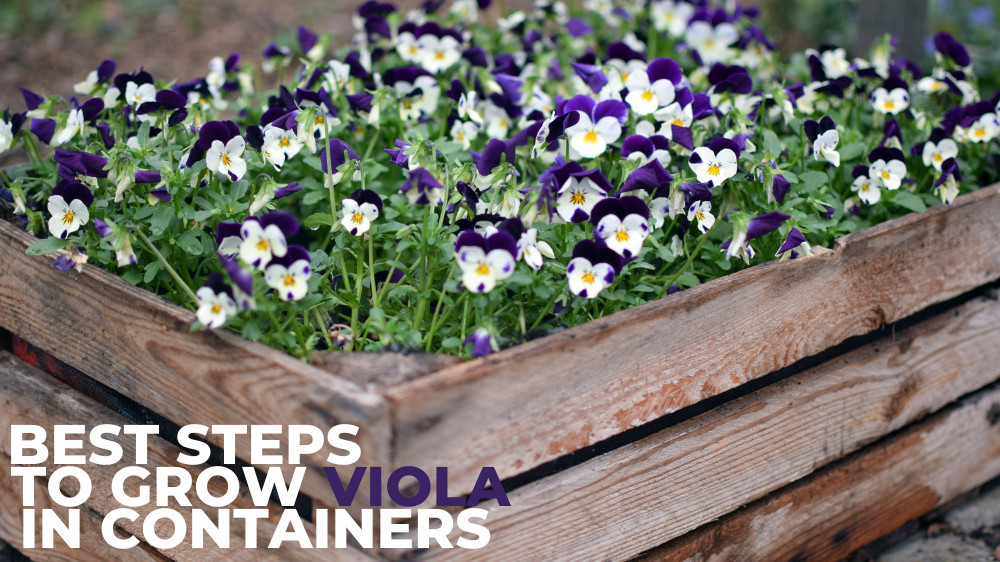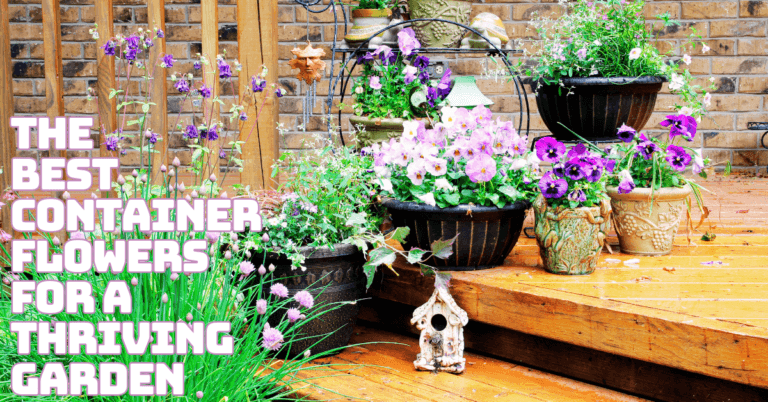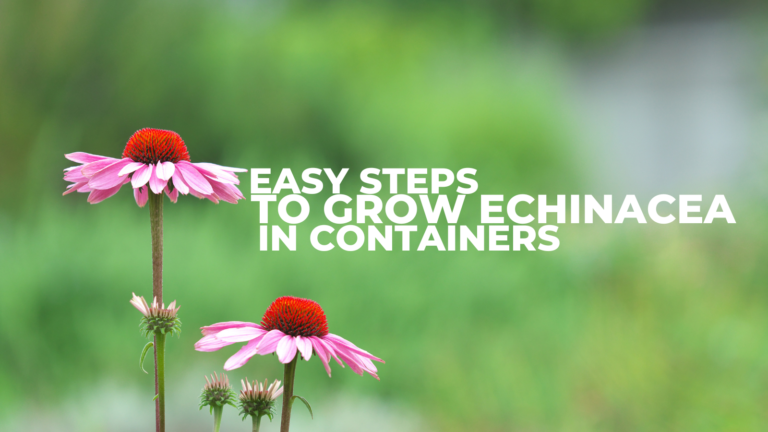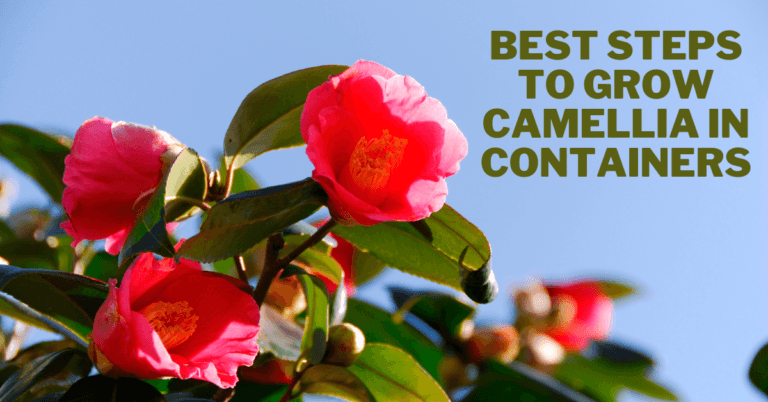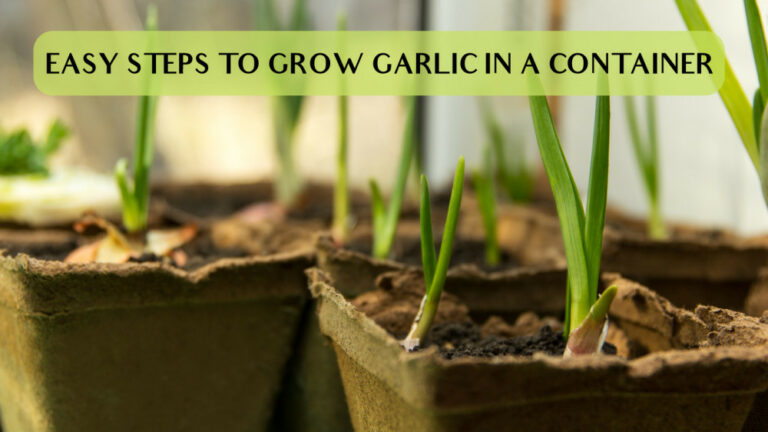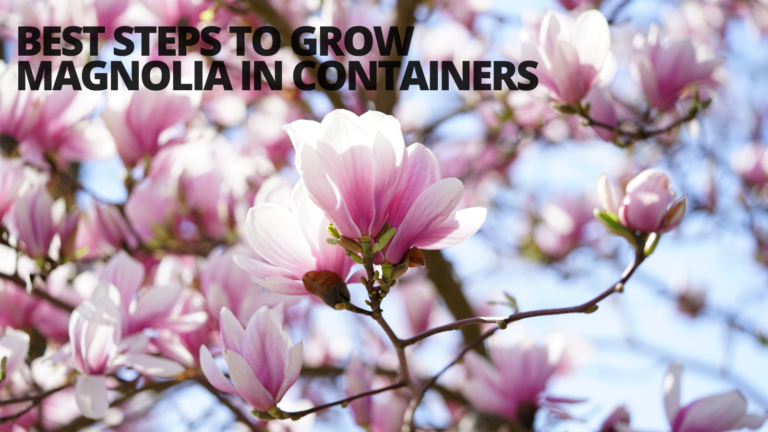Best Steps To Grow Viola In Containers
Best Steps To Grow Viola In Containers
The cheery Viola genus contains more than 500 distinct species, including annuals, perennials, and even some subshrubs.
It has been noted that each flower has a unique face. They are all referred to as violas collectively.
However, their unique garden varieties are more commonly known as pansies (Viola x wittrockiana), Johnny-jump-ups (Viola tricolour), or violets (Viola sorolia and others).
Violas are a diverse group that includes pure species types and countless hybrids and cultivars in every spectrum colour.
Mostly cool-season bloomers, violas: They are ideal for bridging the seasons in warmer regions where they can stay in bloom all winter long and for beginning and closing the season in colder climes.
Depending on your climate, you should decide when to grow violas. They are typically planted in the spring in cool areas, although they can also be planted in regions without harsh winters in the fall.
History & Origin Of Viola
About 500 species of low shrubs or plants in the family Violaceae belong to the genus viola, including the small, solid-coloured violets and the larger-flowered, frequently multicoloured violas and pansies.
Violas are a naturally occurring genus that is found in temperate areas all over the world, with the Andes Mountains in South America having the most variation. Many are grown for their pretty flowers.
There are annual and perennial viola species. However, because Viola can hybridize, it is frequently challenging to distinguish between the species.
The flower, which can be any colour but is never red, typically grows alone on a stalk and has five petals, four placed in opposite pairs and one with a spur.
When growing stemmed violets, the leaves can grow on the same stalk as the flower or separate stalks (stemless violets).
Although Viola's most well-known species have leaves resembling hearts, the leaves of other species may be formed differently.
The plants typically flourish in wet wooded areas. All wild species bloom in the spring, but some farmed kinds bloom later.
There are two types of blooms in many species. One kind is spectacular and blooms in the spring, although it frequently does not produce seeds in some species.
Early in the summer, a less noticeable, fertile flower with closed, self-fertilizing blooms.
Small edible flowers called violas are produced at Fresh Origins Farm in San Diego, California, as part of a range of specialty blossoms.
The fragile blossoms add a delicate, sweet, and vegetal flavour to food when used intact as a garnish.
Since the beginning of time, violas have been growing in the wild. Still, Fresh Origins cultivates, hand-selects, and creates a curated blend of vibrant flowers to give chefs a distinctive, edible garnish to improve the dining experience.
Violas are regarded as one of Fresh Origin's traditional and favorite flowers since they have a long history, stunning beauty, and the ability to work with contemporary preparations.
To make a unique dining experience, the vibrant blossoms can be added to in-house meals or packaged as an extra surprise in takeout orders.
Additionally, violas can be used in cocktails to improve the flavour and texture of the drinks.
Vitamins A and C, which have antioxidant-like characteristics, are found in violas and can help to improve the immune system, increase the skin's collagen production, and protect cells from harm from environmental aggressors.
Additionally, the blooms are found in anthocyanins, which give the petals their colour and offer anti-inflammatory and antibacterial qualities to decrease blood pressure and shield against disease.
Types Of Viola
Violet is one of the brightest tiny flowers to adorn the landscape. African violets, indigenous to East Africa, are distinct from true violets.
Depending on the species, our native violets, which are native to the temperate zones of the Northern Hemisphere, may bloom from spring into summer.
The genus Viola contains about 400 different varieties of violet plants. A cute little Viola is ideal for practically any gardening necessity, thanks to the several varieties of violet plants. You should know about the best types to grow viola in containers perfectly.
1. Delta
The DeltaTM series (V. x Wittrockiana) is a hybrid that is certain to catch the eye of any pansy grower because of its delicate bloom and vivid colour.
These two-inch tricolored flowers come in a variety of distinctive hues, such as “Pure Lemon,” “Pure Red,” “Orange Blotch,” and “Neon Violet.”
These plants make a good choice for a window box or planting along a walkway because they grow into a four to six-inch tall mound with a spread of six to eight inches.
Since the DeltaTMseries cultivars are diminutive, be aware that other flowers might rise over them and rob you of valuable sunlight.
These blooms, hardy in Zones 4–10, prefer moist but well-drained soil.
2. Halloween II
‘Halloween II' (V. x wittrockiana), a big, inky-black bloom, is the ideal addition to your October decorations.
It forms an eight to ten-inch mound and spreads its delectable spookiness throughout Zones 4 to 10. The pansy, known as “Halloween II,” has three-inch flowers and yellow eyes with a purple hue.
Additionally, it could overshadow your other flowers and steal all the show. This resilient variety prefers moist, well-drained soil and grows six to eight inches tall.
Plant seeds 12 to 14 weeks before the typical last date of frost for flowers that continue through Halloween and beyond.
3. Mammoth
The Mammoth series (V. x wittrockiana) lives up to its name with three- to four-inch flowers.
Large, flat, tricoloured blooms with six to eight-inch stalks and six to eight-inch wide plants are produced.
They thrive in Zones 5-9. They are a little less cold-resilient than other cultivars. Flowers from the Mammoth series are calming to the soul and appealing to the senses, with berry, deep violet, and white hues.
4. Matrix
The Matrix series (V. x wittrockiana), which comes in various hues from crimson to pale blue to orange, yields three- to three-and-a-half-inch flowers.
Some are uniform in colour. Some have two shades. Others are traditional tricolour blossoms.
The MatrixTM cultivars won't take over your garden with a spread of six to eight inches wide and six to eight inches tall, but they will draw attention with their intense, brilliant colours and numerous blooms per plant.
From early spring to late summer, Matrix flowers profusely and has very robust branches.
5. Ocean Breeze
These tri-coloured light blue and dark violet blossoms are as brilliant as sea sprays. “Ocean Breeze” (V. x wittrockiana) has a sea-like display and grows eight inches tall with a spread of eight to ten inches.
Plant alongside ‘Panola Pink Shades' or dwarf pink snapdragons for a stunning springtime combo.
‘Ocean Breeze' comes in packs of four plants from Burpee and is hardy in Zones 7–10.
6. Amber Kiss
The ‘Amber Kiss' (V. cornuta) plant's golden-orange blooms are a real beauty, with neat 1-inch blossoms and a pleasantly fragrant aroma.
They have a six-inch spread, an eight to ten-inch height and ten glorious weeks of blooming.
These annuals are available for you to enjoy from early spring to the beginning of the fall when they nicely complement the larger “Halloween II” pansy. They are hardy in Zones 4 through 9.
Grow Viola In Containers
Container Requirements
Your violas can be stored in almost any container as long as it is at least four inches deep.
Planting one flower for every six to eight inches of container space is a good general rule of thumb because the flowers like to have some elbow room.
Soil To Grow Viola In Containers
The best soil for growing pansies and other violas is humusy, moist soil like a peat-based potting mix or garden soil that has been significantly treated with organic material.
Violas prefer somewhat acidic soil; adding peat moss to garden soil will help make it a little more acidic.
Light
Full sun is good for violas, but not the heat it produces. When planting in the summer, ensure they have access to shade during the hottest portion of the afternoon. This isn't an issue in the mild spring weather.
Watering Requirements
Water frequently, but let the soil dry up between applications. While they can withstand some drought, regular watering will help them blossom at their best.
Temperature & Humidity Of Viola
Violas grow in moderate temperatures between 40 and 70 degrees Fahrenheit and enjoy the chilly springtime air. Water and mulch will lessen the impact of high temperatures.
Violas can bloom all summer long with the right care, and most will bloom again in the fall.
Alternatively, especially in hot, southern climes, they can be dug up in the summer, replaced with another flower, and then replanted in the fall when the temperature becomes cooler.
Fertilizer
A small amount of organic fertilizer applied monthly during the growing season benefits violas—deadhead flowers frequently to promote new blooms.
Violaceae plants regress and their blossoms fade in hot temperatures. Prune violas in the fall to revitalize the plant and promote fall flowering.
It is not only a waste of money to use ammonia fertilizer, but it can also harm the health of your pansies and violas.
Apply a typical 15-2-20, high-nitrate pansy formula fertilizer at 4-day intervals for the most outstanding results.
Pruning
By pinching off faded blossoms at the base of the flower stem, you can encourage blossoming and lengthen the flowering season.
Cut lanky or overgrown plants back to a height of 3 to 4 inches to help them recover.
Grow Violas From Seed
It's simple to grow violas from seeds. Although they are eager to self-seed all over your garden, chilly conditions may cause the volunteers to bloom much later in the season.
The technique is quite simple if you want to start your own indoors. Start the seed 8 to 12 weeks before transplanting.
Although mature violas may endure brief periods of chilly weather, fresh transplants may suffer harm.
Gardeners in warm climates who transplant in the fall should start their seeds in the middle of the summer.
- A sterilized potting mix should be poured into tiny pots or flats to about 1/4 inch below the top edge.
- Scatter two to three seeds in each cell or pot, then lightly cover with the other moistened potting mix.
- Remember to cover the viola seeds completely because they need darkness to germinate.
- Keep wet and place in a warm area (65 to 70 degrees Fahrenheit). A good place is on top of the refrigerator.
- It should take 10 to 14 days for seeds to start germinating. Move the seeds to a window with sunlight or a grow light once they have sprouted.
- When the first true leaves develop, you must thin the pot or cell to the strongest-looking seeds by pinching or cutting the others at the soil line.
- A temperature of 55 to 60° Fahrenheit is appropriate at this time. Additionally, you can start giving your seedlings any dependable, well-balanced, water-soluble fertilizer.
- When the weather and temperature are suitable for transplanting outdoors, start “hardening off” the seedlings by exposing them to the outdoors for longer and longer periods over 10 to 14 days.
- Increase the exposure to the sun gradually, starting with one to two hours. During this stage of “hardening off,” make sure the soil doesn't dry up.
- You can permanently put the seedlings into the garden or their outdoor pots once they have gotten used to spending entire days outside.
- Growing from seeds placed directly in the garden is another option, but this method performs best in areas with a long growing season.
Planting areas should be carefully prepared by adding organic matter, loosened soil, and scattered seeds should be scattered.
Place a thin layer of soil on top, then thoroughly water the area. Make sure the seedbed is wet. As the seedlings grow, space them out to a distance of 6 to 8 inches, moving the extra seedlings to different places.
Pests & Diseases Of Viola
Unfortunately, several aphid species may consume violas, so caution is advised. Be sure to eliminate them before they become too many.
Use a spray like SB Plant Invigorator, which manages pests and promotes plant development if the helpful insects cannot save you.
Slugs and snails love the young, crisp viola leaves, so attempt to catch them in the act or set a trap by placing an old beer saucer nearby.
Nematodes for when the weather warms up, a foliar spray, and a seaweed meal to sprinkle on the ground are some other goods we provide that are worth trying.
If your plants start to yellow and become stunted, a fungus attacking the roots and leaving behind a network of dark purple strands may be to blame.
Before replanting, remove any plants with compromised roots and enhance soil drainage.
Numerous fungi infect the leaves of violas, producing brown or black flaws on the surface that, if left untreated, will spread to nearby plants.
Ensure you avoid purchasing plants with these signs, improve airflow, and avoid wetting the leaves when you water.
This mainly affects the winter-flowering pansies growing in cool, moist environments. If not treated right away, pale spots emerge on the leaves' underside and eventually extend to the blooms. Before planting, check fresh plants for symptoms.
Viola Care
In nurseries in colder climates and at the end of the summer in warm climates, violas are frequently the first seedlings for sale. Find plants that are robust and have a lot of buds.
The distance between mounding violas should be between 6 and 8 inches. Planting spaces between kinds that trail or spread should be 10 to 12 inches. Approximately 12 to 14 weeks after sowing the seeds, violas start to bloom.
Variety names “Penny” and “Sorbet” will bloom nine to ten weeks after seeding; V. tricolour (Johnny-jump-up) variations bloom around two weeks earlier than V. cornuta (horned violet).
These plants will bloom continuously, but if you deadhead the spent blooms, the flowers will be more numerous. During the hottest parts of the summer, violas will likely fall dormant or start to die back.
Outside, the mounded plants create a charming border for a garden or to mark a route. Both in wooded environments and in the cracks of rocky cliffs, violas thrive.
Combine them with other plants that thrive in cooler climates, such as Dianthus, snapdragons, and calendula.
Or, to fill the space as the spring-flowering bulbs, like tulips and daffodils, fade, nestle violas between them.
Violas are ideal for containers due to their size, compact habit, and lengthy flowering cycle. Trailing variety looks beautiful in window boxes, hanging baskets, and over the edge of other containers.
Conclusion
Viola seeds should be planted in a cool, dry location away from sudden temperature changes.
While many people keep their seeds in the basement, if that isn't an option, look for a dry, dark cabinet that is not right next to a heater or oven.
However, avoid selecting a cupboard where the temperature will change because the seeds may quickly lose viability in this environment.
Additionally, if your seed storage area is exposed to light, consider using an opaque container or enclosing the envelopes in a cloth bag. If not, the light might promote germination.
It is essential to keep the seeds dry because moisture can also lead to germination.
Use an airtight locking container to store dry and away from moisture. Feel free to comment if you face any problems with growing viola in containers.
I trust you enjoyed this article on the Best Steps To Grow Viola In Containers. Please stay tuned for more blog posts to come shortly. Take care!
JeannetteZ
>>>Please click here to read my all-inclusive article about Container Gardening<<<
>>>Are you interested in homegrown herbs and medicine? Please click here to find out more about it!<<<
Your Opinion Is Important To Me
Thoughts? Ideas? Questions? I would love to hear from you. Please leave me your questions, experience, and remarks about this article on the Best Steps To Grow Viola In Containers in the comments section below. You can also reach me by email at Jeannette@Close-To-Nature.org.
Disclosure
This post may contain affiliate links. As an Amazon Associate and other affiliate programs, I earn from qualifying purchases at no extra cost to you. Read my full affiliate disclosure.
You might also enjoy these blog posts:
Best Steps To Grow Parsnips In Containers
Best Steps To Grow Black-Eyed Susan In Containers
Best Steps To Grow Globe Amaranth In Containers
Best Steps To Grow Strawflowers In Containers
Best Steps To Grow Tansy In Containers

